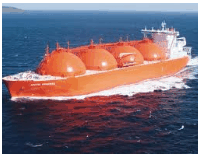
Federal Industry Minister, Ian MacFarlane, has provided an interesting overview of the challenges facing Australian industry (and New South Wales in particular) as a result of the large scale export of LNG out of Gladstone, which threatens to create domestic gas shortages and force-up gas prices. From Business Spectator:
IM: …the biggest thing in the resources side of the portfolio is gas supply into New South Wales. Now, shale gas will be part of that solution in time. CSG or coal seam gas will be the solution in the short term, though. Getting both those sectors going – particularly in New South Wales – is a very immediate and real priority. I mean, no one seems to argue now – although they did 3.5 years ago when I started warning them – no one argues now that New South Wales will face a gas crisis perhaps as soon as 18 months. And there’s no doubt that once the three sets of [LNG] trains are operating, there will be very little gas coming down to NSW in terms of the CSG industry in Queensland.
So the reality is that we’re working through the issue of CSG supply in NSW…
That’s the challenge at the moment. We know the gas is there. We’ve just got to get it out of the ground…
SB: Ian, even if the NSW government were to look more kindly on CSG exploration and production in the state, it would take some years to actually get meaningful supplies of gas to flow. There’s been a lot of calls for reservation of gas to address the NSW issue. I take it you’ve got some strong views on this?
IM: Well, let me just say two things. Firstly, I understand the urgency in getting started in NSW and I’m not asking the NSW government to relax any conditions. They’ve put in place a set of conditions and even after all of that the issues around densely populated areas and two-kilometre buffers – all of which I support – there is still ample opportunity to extract gas. In terms of reservation, you can’t reserve something you haven’t got and what NSW hasn’t got is gas, so they haven’t got anything to reserve in the first place. Reservation is not the solution in New South Wales. Getting gas supply is the solution in New South Wales. You won’t get it by interfering in the market by threatening reservation or doing whatever you can because, as I say, there’s no gas to reserve. You need to get this gas proven, up and out of the ground.
RG: Ian, let’s assume you do that and the gas is proven and it can be supplied to NSW, is the price at which it’s economic, say, twice or three times the current price? And if that’s so, what effect will that have on gas-using industries?
IM: Well, no doubt the price of east coast gas is going to become the international price and you can argue what that price is. Some would say the cashback price out of Gladstone is about $12 a gigajoule. In reality I think, though, that for domestic supply if we can keep the price of gas around $7 to $8 for domestic supply, then I think you’ll see plenty of gas produced…
RG: What effect will that have on the industry development in New South Wales?
IM: Well obviously industries based around low-cost gas are going to find that very difficult…
AK: The Coalition government has a big interest in cheap gas as well because without cheaper gas there’s no way that we’re going to meet the carbon emissions reduction target the Coalition has in its policy.
IM: Well we do have an interest in cheap gas, but more importantly we have an interest in gas and as I say the reality is that without LNG in Gladstone, this CSG would still be sitting in the ground in Chinchilla and Roma and all areas around that. It’s only by exporting this gas at a Pacific Rim price that it is economical to exploit CSG. Coal seam gas is an extraordinarily expensive way to get gas out of the ground compared to natural gas… So, saying ‘Well we need cheap gas at $3.50’, coal seam gas will stay in the ground at $3.50. We have to adjust the industry to using gas at a higher price. But I take your point on emissions. Gas will play an important part, but as I say the industry will be using it at a higher price than perhaps they’re historically used to.
The more I think about this issue, the more I am inclined to believe that Australia has shot itself in the foot in not developing a domestic gas reservation policy. In its haste to rubber stamp new LNG export projects and earn a quick buck through the Petroleum Resource Rents tax, the Federal Government has effectively allowed a domestic gas shortage to develop, which now threatens the livelihood of domestic industry, as well as forcing up costs for households.
Ironically, energy companies and the politicians that serve them are now exploiting the problems they’ve created, by using the resulting gas shortage to insist that Australia needs widespread development of Coal Seem Gas (CSG) in order to ensure domestic supply. Yet, these alternative sources of gas pose real environmental dangers, including potential poisoning of ground water, which could adversely impact on the agricultural industry and are unlikely to be cheap enough to make a difference anyway.
The whole situation leaves a cynic like me wondering whether for every dollar earned from exporting gas to Asia, Australia faces losing much more in lost value-added local production.
In any event, the horse has already bolted, which leaves me hoping that the US succeeds in boosting exports sufficiently to depress global gas prices and, in turn, ensuring that domestic prices don’t rise too far.

